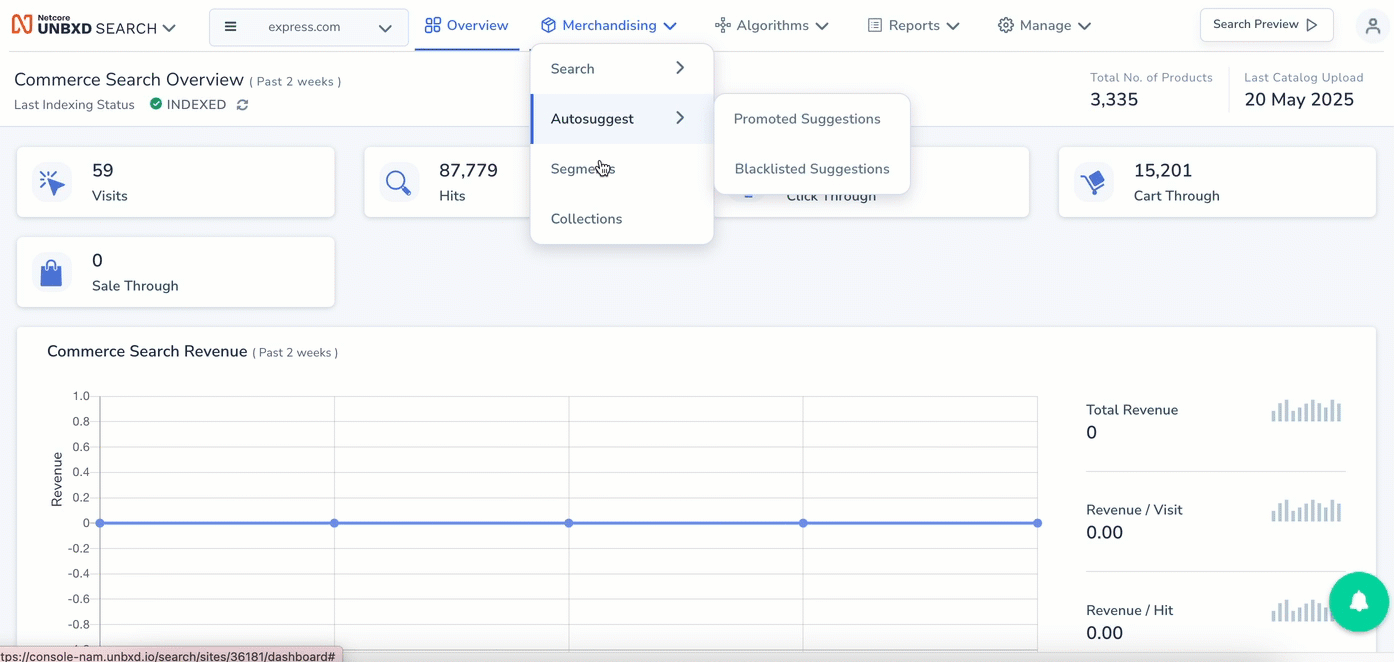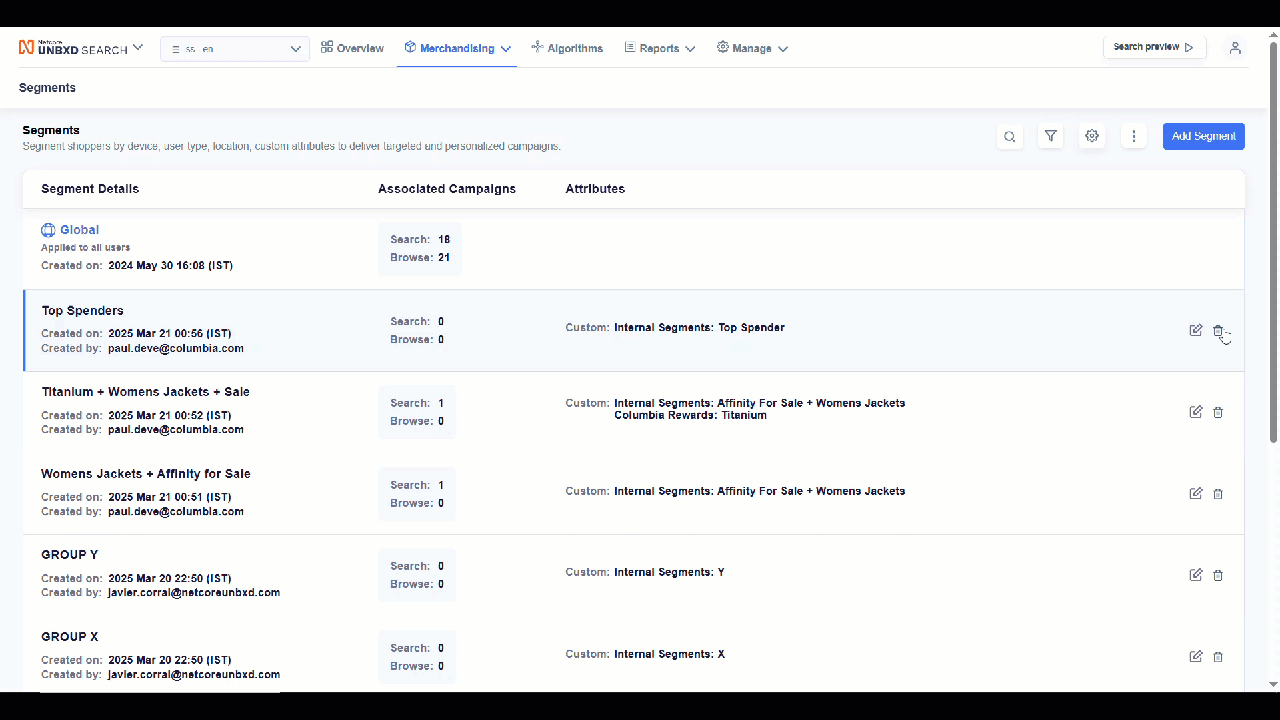Merchandising : Segments
It allow you to group and target shoppers based on attributes, enabling personalized experiences and marketing strategies
Overview
Segmentation categorizes customers into groups based on shopping history, geographic location, device type, and other attributes. This enables targeted marketing and merchandising strategies.
In eCommerce, a merchandiser uses segmentation to display products more relevant to a customer’s specific segment. For example, showing trending products to new visitors or recommending items based on past views for returning customers.
Netcore Unbxd provides a platform to create and manage these segments. It allows configuring attributes (like location, device, and user type) and custom attributes.
Types of Segments
Segments are defined based on:
Location: Analyze purchasing patterns across different regions. Recommend products with lower shipping costs based on shopper locations.
Devices: Identify purchasing trends across different devices. Track cross-device purchases and personalize each channel’s experience.
Visit Type: Differentiate between first-time and returning shoppers. Display trending products for new visitors and recently viewed or recommended products for returning shoppers.
Custom Attributes: They are included in the search API request to segment shoppers based on specific requirements.
Create a Segment
To create a segment, follow these steps:

Create a Segment
- Navigate to Merchandising > Segments > Add Segment
- Click on the add new segment and provide the name of your segment in the Add Segment Name box at the top.
- Set up the attributes in the next block. You can set up a maximum of 6 attributes, which includes one default attribute and five custom attributes. Refer here for the attribute details.
- Select the "save segment" button.
The created segment will be visible on the Listing Page.
Segment Listing Page
The below functionality is present on the Segment listing page.
- Search : Use the search option (search icon) to find and manage existing segments based on attributes such as location, device, and visit type.
- Filter : Use the filter option (filter icon) to view the table below to know about the options available in Filters.
| Option | Description |
|---|---|
| Created date | Period in which the segment was created |
| Creator email | Who has created the segment |
| Segment's attributes | Group shoppers by location, device, and visit type |
- Custom Attributes: Click on the (setting button image) and select add new custom attribute to create an attribute. These attributes will be used to create segments.
NoteThe attributes can be rearranged in order of importance by drag-and-drop operations on the console. Learn more about Default attributes and Custom attributes here.
- Bulk upload/download segment : Easily upload or download segments in bulk for efficient management. You can upload a locally created JSON file with multiple segments to the console simultaneously. Similarly, you can download the list of created segments in bulk.
- Delete a Segment : Custom attributes can be selectively deleted if not used in any active segment and Unbxd default attributes are permanent and cannot be removed from the system.
Good to knowActive Segment: If a segment is used by any active or upcoming campaigns in search or browse. It cannot be deleted unless the Segment expires or stopped.

Delete a Segment
Updated about 2 months ago
